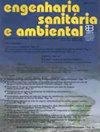The environmental and microbiological efficiency of vegetable cleaning
IF 0.5
4区 环境科学与生态学
Q4 WATER RESOURCES
引用次数: 0
Abstract
ABSTRACT Faced with the increase in water scarcity periods, the optimization of the use of this resource is increasingly necessary. This study aimed to evaluate the cleaning stage of Lactuca sativa for the preparation of meals outside the home with the participation of 9 restaurants using the Life Cycle Assessment tool, being later also extended to homes, with the participation of 8 households. The agricultural stage represented an average of 39.8% of all the impacts, the lettuce polypropylene wrap 14.4% and the transport stages 26.1%. The use of “blue” water ranged from 38 to 71 liters per kg of raw lettuce only in the cleaning stage, which represents 76% (households) and 77% (restaurants) of all the water used in the whole life cycle. In evaluations carried out, cleaning was considered efficient from the sanitary point of view, with 100% of the samples with Escherichia coli counts below the maximum allowed. The variability of the data obtained and the measured efficiency of sanitization, together, support the possibility of reducing the water consumption, mainly through training and awareness of the operators.蔬菜清洗的环境和微生物效率
摘要:面对水资源短缺期的延长,水资源的优化利用越来越有必要。本研究旨在利用生命周期评估工具,在9家餐馆参与的情况下,评估亚麻籽的清洁阶段,以供在家外做饭,后来也扩展到家庭,有8个家庭参与。农业阶段平均占所有影响的39.8%,生菜聚丙烯包装阶段占14.4%,运输阶段占26.1%。仅在清洗阶段,每公斤生生菜的“蓝色”水使用量从38升到71升不等,占整个生命周期用水量的76%(家庭)和77%(餐馆)。在进行的评估中,从卫生角度来看,清洁被认为是有效的,100%的样品中大肠杆菌数量低于允许的最大数量。所获得的数据的可变性和测量的消毒效率,共同支持减少用水量的可能性,主要是通过培训和提高操作人员的意识。
本文章由计算机程序翻译,如有差异,请以英文原文为准。
求助全文
约1分钟内获得全文
求助全文
来源期刊

Engenharia Sanitaria E Ambiental
WATER RESOURCES-
CiteScore
0.90
自引率
20.00%
发文量
101
审稿时长
>12 weeks
期刊介绍:
Information not localized
 求助内容:
求助内容: 应助结果提醒方式:
应助结果提醒方式:


